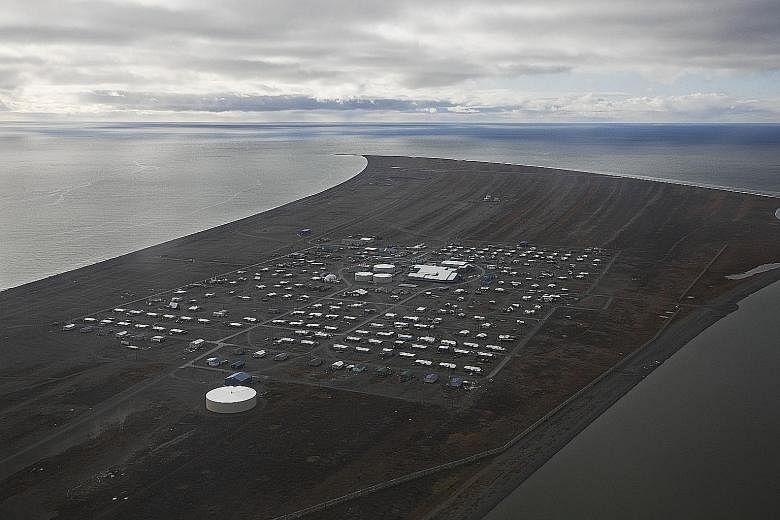POINT HOPE (Alaska) • This is one of the most remote towns in the United States, a small gravel spit on the north-western coast of Alaska, more than 5,920km from New York City. Icy seas surround it on three sides, leaving only an unpaved path to the mainland.
Getting here from Anchorage, about 1,100km away, requires two flights. Roads do not connect the two places. Basics like milk and bread are delivered by air, and petrol is brought in by barge in summer.
"I don't know if people even know that we exist," said Ms Daisy Sage, the mayor.
Needless to say, this is not the sort of place you expect to be a hub of the high-tech digital world.
But in a surprising, and bittersweet, side effect of global warming - and of the global economy - one of the fastest Internet connections in America will soon be delivered to Point Hope's 700 or so residents, giving them their first taste of broadband speeds.
The new connection is part of an ambitious effort by Quintillion, a five-year-old company based in Anchorage, to take advantage of the melting sea ice to build a faster digital link between London and Tokyo.
High-speed cables snake under the world's oceans, tying continents together and allowing e-mail and other bits of digital data sent from Japan to arrive quickly in Britain. Until recently, those lines mostly bypassed the Arctic, where the ice blocked access to the ships that lay the cable.
But as the ice has receded, new passageways have emerged, creating a more direct path for the cable - over the Earth's northern end through places like the Chukchi Sea - and helping those e-mails move even faster. Quintillion is one of the companies laying the new cable, and Point Hope is one of the places along its route.
Financial firms would certainly welcome - and pay for - a faster connection between London and Tokyo. But it will be years before the full connections between countries are made.
For now, Quintillion's undersea cables are just around the northern part of Alaska, and the company is taking advantage of a nascent business boom in the Arctic.
Quintillion is also teaming up with local telecommunications companies to use the undersea cables to bring faster Internet service to some of the most disconnected communities in the US.
In Point Hope, the new connection could mean better healthcare, as patients in the town and doctors in faraway cities communicate via seamless webcast. It could help improve education, too. Teachers, now used to waiting hours to download course materials, will be able to do it in minutes.
Many of Point Hope's older residents cringe at the incursion of technology. But interviews with other residents suggest that they see Quintillion's cable as a way of connecting with an outside world that has long been beyond easy reach - and something that could change their lives for the better.
Ms Leona Snyder, for one, is excited about what the connection could do for her 15-year-old son, Justice Jones. She wants him to go to college, which would mean leaving the village. Having broadband Internet could help him study and research outside opportunities.
Last month, about 25 residents, including the mayor, gathered at City Hall and talked about how Internet service could turn Point Hope, one of the oldest continuously inhabited communities of North America, into a tourist destination with a museum that would have interactive displays and a website. The village's small motel, with 20 beds, would offer Wi-Fi.
"The trigger to all of this is lower-cost broadband that will bring a whole new economy and hope to places like Point Hope," said Mr Jens Laipenieks, president of the Arctic Slope Telephone Association Cooperative.
NYTIMES


